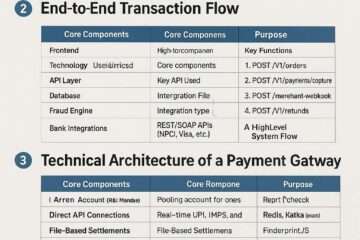

The World gets sick when the US is not feeling well.
In the past 15 days, there have been far too many nerve-wracking moments on the global markets. What if the US fails to raise its debt ceiling and stops making debt payments? This is the worry on US DEBT DEFAULT CRISIS. The US Treasury has been able to keep the country’s finances afloat ever since January 2023, when the maximum amount of USD31.4 trillion in debt that it could issue had been reached. S&P 500 index volatility, a sharp increase in credit default swaps (essentially insurance against all types of debt default), and a further sharpening of political polarization between Democrats and Republicans followed.
US REMAINS OPTMISTIC FOR A RECON DEAL
The S&P 500 index is now positive and even hopeful that the problem will be rectified in due time, and US Debt Default Crisis will be resolved. In fact, a deal to increase the debt ceiling until 2025 is getting closer between Republicans and Democrats. However, there is still a remote chance of a default, which could send the US into a downturn and make US DEBT DEFAULT CRISIS worst. Due to the fact that roughly 30% of US debt is held by foreign governments, this will have an effect on the economies that lend to the US market. Of the whole USD31 trillion, India alone contributes for USD220 billion. An agreement on the debt ceiling would be a major relief on the macroeconomic front, according to Indian fund managers. Refer a detailed news https://www.cfr.org/backgrounder/what-happens-when-us-hits-its-debt-ceiling.
The deja vu
The current headwind in the US economy, including a potential downgrade, reminds Indian policymakers and central bank officials of past events. How? Read on.
Top finance ministry officials hurriedly called senior Reserve Bank of India (RBI) officials throughout the weekend of August 6–7, 2011. And that makes sense. The US’s AAA rating, which it had held for 70 years, had been reduced by S&P a day earlier. S&P was worried about the state of the US economy and the mounting debt. The US’s long-term debt was downgraded to AA+ and given a poor outlook. Officials from the finance ministry wanted to learn how this might affect India from their counterparts at the RBI.
American Rating Drop
Career officials overseeing India’s economy were seeing an American rating drop for the first time, so their anxieties were not unfounded. Investments in US Treasury bonds made up around 13% (or about USD41 billion) of India’s total foreign exchange reserves at the end of July 2011, which totaled USD319.09 billion at the time. Only the following Monday will the effects of the S&P announcement, which came after market hours on Friday, be clear.
“There was an unspoken rule that the RBI would only invest in top-rated (read AAA) instruments for safety and liquidity since it was in charge of managing the nation’s foreign exchange reserves. The entire investment in US treasuries was rated below that following the downgrade of the US. As a result, there were worries and inquiries about potential alternative to USD.
US TREASURIES
On Monday, to everyone’s amazement, something unexpected occurred. As investors flocked to the protection of US debt despite a downgrading, rates on US Treasuries dropped rather than rising as expected. The 10-year US bond yields had a sharp decline during the course of the next two months, falling from 2.5% on August 5 to 1.9% on October 5.
Cut to the present, and everyone is wondering if the US economy would suffer a downgrading this time. What will happen if a loan payment is missed too? Is a recession coming to the US?
US Debt Ceiling Revision and the Conundrum
Treasury Secretary Janet L. Yellen wrote to US House Speaker Kevin McCarthy on May 15, 2023, stating that the government “likely no longer will be able to satisfy all of the government’s obligations” if the debt ceiling is not raised or suspended by early June, and possibly as early as June 1.
The US could default on its commitments, such as the repayment of bonds, the payment of salaries, or any other expense, after June 1, or the “X-date,” in American terminology.
In the letter to McCarthy, Yellen stated that waiting until the very last minute to suspend or raise the debt limit can seriously harm business. It can also harm consumer confidence, increase the cost of short-term borrowing for taxpayers, and harm the United States’ credit rating.
The US House of Representatives
The House of Representatives, the lower chamber of the US Congress, is dominated by Republicans, and the Senate, the upper chamber, is dominated by Joe Biden-led Democrats. In their discussions on raising the debt ceiling, Republicans have been demanding significant spending reductions to guarantee a sustainable budgetary path for the US.
The Committee for Responsible Budget estimates that, under the 10-year budget predictions, it would take USD16 trillion in total spending reductions to fully balance the US federal budget over that time.
Since 1960, the US Congress has raised the debt ceiling 78 times, with seven temporary suspensions. The X-date is set for August 18, 2023 by Moody’s.
The Global Repercussions of the Downgrade
“A default would deal the already vulnerable economy a fatal blow. “Global investors would understandably believe that the federal government’s finances have been politicised and that a time may come when they would not be paid what they are owed when owed it,” Mark Zandi, chief economist of Moody’s Analytics, said in a written testimony on March 7, 2023, before a US Senate Committee on banking. “Even if resolved quickly, Americans would likely pay for this default for generations.”
Black Swan Event Coming
A black swan occurrence of this magnitude would not go unnoticed by emerging markets, especially India. Both the domestic currency markets and the equity markets would see extreme volatility. The stakes are significantly higher now than they were in 2011, when Indian leaders expressed concern about their nation’s currency holdings in US debt.
The domestic ownership of the US debt is about 70%; the remaining 30% is owned by foreign nations and entities.
A significant portion of the 30% stored abroad are central bank reserves. India has a fairly sizable amount of money—roughly around USD 220 billion. China possesses more over eight hundred billion, whereas Japan holds more than one trillion. Additionally, a lot of affluent organizations, people, investment funds, and sovereign wealth funds, based in the Middle East, Norway, etc., hold some,” said Kenneth Rogoff, a former IMF chief economist and current Harvard University economics professor, in an interview with The Economic Times on May 11.
Rating Downgrade Possibility
If the Treasury missed a bond payment, it would be downgraded, according to Moody’s Investors Service. However, the rating agency claims that if the episode is brief and resolved with a full recovery, the impact on the ratings “would likely be limited, with the sovereign rating likely remaining close to AAA, consistent with the US’ very high capacity to repay debt and supported by a number of key considerations, including very strong economic and institutional credit features.” It makes US Debt Default Crisis worst.
According to the report, a downgrading of Treasury debt would have a cascading effect on other financial institutions’ debt as well as debt issued by non-financial companies, governments, infrastructure suppliers, and other debt issuers.
Recession in US in 6 Months ?
A recession and a rise in unemployment would result from a debt payment default in the US. A US recession will not only have an immediate impact on the financial markets but also negatively damage global output and India’s economic growth.
“The timing for the economy could not be worse. Many CEOs and economists think a recession is inevitable, even in the absence of the threat of a violation of the debt ceiling. Even if nothing else went wrong, preventing a recession would be challenging because the Federal Reserve is raising interest rates to combat wage and price pressures, according to Moody’s Analytics’ Going Down the Debt Limit Rabbit Hole analysis from March 2023.
“Most leading indicators of recession, including the prescient Treasury yield curve, [which] strongly points to recession beginning later this year at about the time lawmakers will be fighting over the limit,” it said.
According to Moody’s, a default event may lead to a US recession in 2024, costing the economy 2.6 million jobs at its worst and raising unemployment to a peak of close to 6% which makes US Debt Default CRISIS worst.
The Recession Signal Via DXY
The dollar index, or the DXY, is the indicator that might best capture the market’s response to changes in the debt ceiling. It compares the value of the US dollar to the euro, Swiss franc, British pound, Canadian dollar, Japanese yen, and Swedish krona, among six other currencies. The dollar index places the euro at the top with a weight of 57.6%.It makes US Debt Default Crisis Worst.
US Treasury securities are less desirable as a means of holding foreign reserves because of the threat of a default and the possibility of not being paid on time. Theoretically, this lowers demand for dollars and causes the DXY to weaken. However, the opposite could really occur, as was witnessed in 2011, when US debt yields decreased despite a credit downgrade.
DXY GIVING MIXED Signals
The DXY currently exhibits no discernible signal or trend; traders would describe it as being in a side-ways jumble. As shown in the chart, it is now trading in the center of a short-term range between 101 and 106. Even though the dollar index has increased by almost 2% over the last seven trading days, the short- to medium-term trend is still bearish as long as DXY remains below the 20-week exponential moving average. What steps can be taken to combat US Debt default Crisis.
The DXY is currently in a side-ways tangle, as traders would describe it, with no discernible signal or trend. The price is now fluctuating in the middle of a recent range between 101 and 106 (see chart). Although the dollar index has increased by almost 2% over the last seven trading days, the short- to medium-term trend is still bearish as long as DXY remains below the 20-week exponential moving average.





























































[…] Read a related news . […]